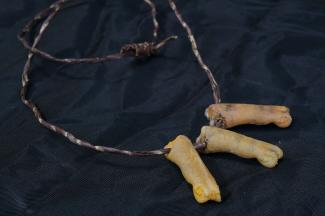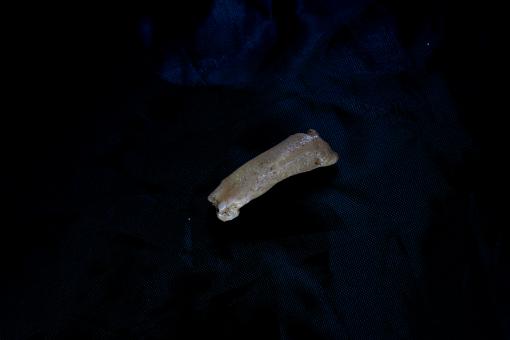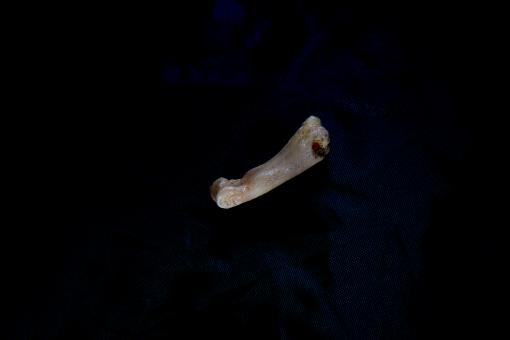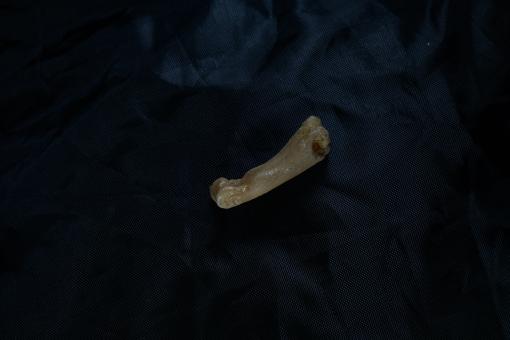This object is a replica of a pendant which is 22,000 to 30,000 years old and was found in the Leang Bulu Bettue cave, Maros Regency, South Sulawesi, Indonesia and displayed in the regional museum. The original pendant was found with other portable art including beads and engraved stones. The cave where the objects were found was decorated with rock art made of red ochre.
Traditional methods
The pendant is made from bone and has a hole which has been honed and made smooth. There is evidence of wear around the hole of the pendant, indicating that it may have been attached to a string necklace and been worn around the neck.
The animals used for jewellery are usually endemic to Sulawesi Island. Pendants may be made from the bear cuscus (Ailurops ursinus) and beads from the deer-pig (Sus celebensis). The two endemic animals can still be found around the Leang Bulu Bettue cave where the objects were found.
The discovery of this pendant illustrates the relationship between humans and animals from this time, with animals not only eaten as food, but used to create artwork.
This excavation at Leang Bulu Bettue cave was a joint Australian-Indonesian project: Early human symbolic behavior in the Late Pleistocene of Wallacea
Staff from the Institute for Cultural Heritage Preservation in South Sulawesi share the significance of the bone pendant held in their collection.





